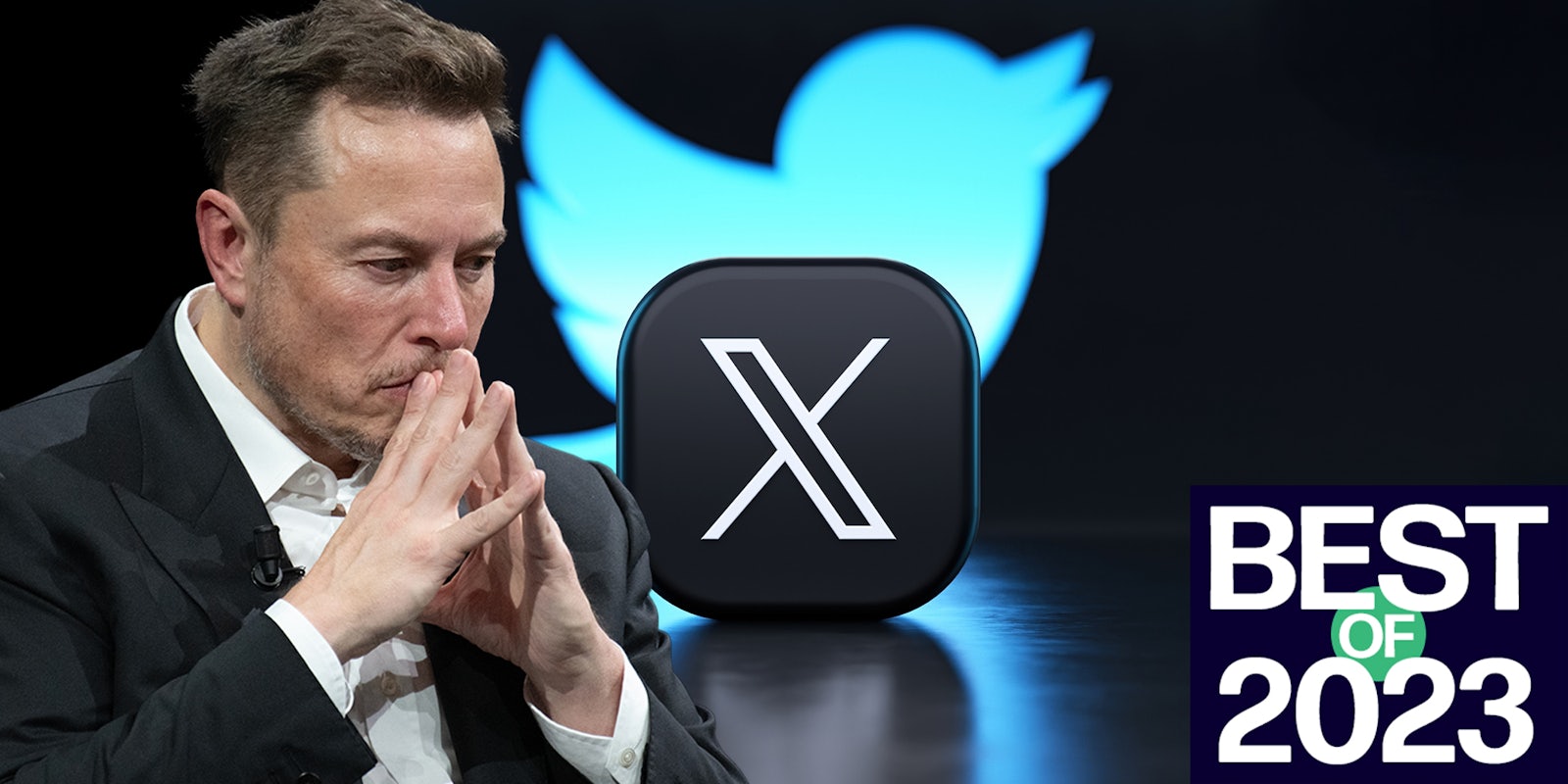Analysis
It’s hardly been a year since the world’s richest man seized the helm of Twitter.
The platform has been in absolute chaos ever since—and Elon Musk has nobody to blame but himself.
Musk completed the $44 billion acquisition in October 2022. And one of the first things he did was fire half the staff, effectively reducing the company’s institutional knowledge by half in one fell swoop.
That was bad, but Musk’s worst move thus far was changing Twitter’s name to X. It’s difficult to put into words how stupid this was from a marketing perspective. Brand recognition is one of the most valuable intangible assets a business has. Both Twitter’s name and logo were instantly recognizable the world over. People fondly referred to it as “the bird app.” It had its own lingo. Employees were “tweeps.” Posts were tweets.
Seemingly on a whim, this summer, Musk threw all that away and renamed it X. He chose the name—and this is not a joke—because x is his favorite letter in the alphabet.
Musk also selected a new logo that looks like he gave a freshman graphic design student 30 seconds to create it in Microsoft Paint.
Musk’s second biggest blunder was unsuspending almost every racist, conspiracy theorist, and troll who had been banished from the platform.
Twitter was something of a digital town square. Thanks to this decision, X is more like its sewer system. This and Musk’s habit of endorsing antisemitic conspiracy theories have sent advertisers running to the hills.
One might expect that anyone with the teensiest amount of business sense would try to staunch the bleeding, perhaps by apologizing. But Musk isn’t just anyone. On Nov. 29, he told a packed audience at the New York Times’ DealBook conference that he actually hopes brands stop advertising.
“If somebody is going to try to blackmail me with advertising, blackmail me with money, go f*ck yourself. Go f*ck yourself. Is that clear?” he continued.
Telling customers to go f*ck themselves may work for a business like Karen’s Diner, but it doesn’t seem to be doing X any favors.
Also in 2023, the platform did away with its old verification system.
You used to have to prove your identity and be notable in some way to get verified, which was indicated by a blue check mark next to your screen name. Both coveted and scorned, the check mark basically meant you were who you said you were. It also meant that more people would see your posts, as the algorithm prioritizes verified users in the timeline and in comment sections.
Earlier this year, Musk unverified everyone who got a check mark under the old system in favor of a pay-to-play system.
Now anyone can get “verified” for $16 a month, a 50% increase a year after paid verification launched. Gray check marks indicate an account belongs to a government official or entity, which is the only way to get verified for free. If you feel like splashing out, for $12,000 a year, you can get a gold checkmark. So fancy.
If this strikes you as confusing and dumb, that’s because it is. It’s also weirdly off-brand that Musk didn’t swap the check mark for an x.
Shortly after nuking legacy verification, Musk announced that Linda Yaccarino, formerly of NBCUniversal, would succeed him as CEO. (Now is a good time to look up the glass cliff effect.)
He’s still technically her boss, though. Which is probably why hiring Yaccarino hasn’t stopped the steady stream of stupid decisions that have Musk’s musk all over them.
This summer, X rolled out a revenue sharing program for verified users. So now the platform that’s hemorrhaging advertisers is literally paying white supremacists, accused rapists, and trolls to twe—er, post on X.
In July, Musk decreed that unverified users could only read 600 posts per day. He claimed the move was designed to address platform manipulation and data scraping. Even if that’s true, limiting how much people can use your platform is not exactly a great way to boost engagement.
This fall, the scion of an emerald miner who had children with his own stepdaughter tried to lure people into spending more time on X or whatever by removing headlines from articles shared there.
It went swimmingly.
Just kidding. People trolled the hell out of it by writing false captions for articles claiming Musk was dead or worse.
As one person observed at the time, “lol the last year of Twitter is essentially just an experiment in taking a website that revolves around news/information and making it as hostile as possible to the people and organizations that do news gathering.”
To mark the first anniversary of his campaign to destroy his $44 billion toy like the world’s richest petulant toddler, Musk held an all-hands meeting with the skeleton crew keeping X from disintegrating into a sad 404 message. In this meeting, he revealed his vision: X is to become the “everything” app, where you bank, make calls, find love, look for jobs, and maybe do some light trolling.
Given how successful he’s been thus far, smart money says X becomes the everything app right around the time we get those flying cars Back to the Future promised we’d have by now.
In short, Musk’s tenure at Twitter/X has been a disaster. His platform is a cesspool that’s worth less than half what he paid for it.
Some may wonder why a person with any business sense would do such things. Some may theorize that Musk should lay off the ketamine and sleep in a real bed, possibly with another human. (But please, use some protection. The world has enough Musk.)
The only person who can explain Musk’s decisions is the man himself. And he’s stunningly inarticulate at doing so.
People used to gush about what a genius Elon Musk was. His moves at X this year have successfully disabused us all of that notion.




